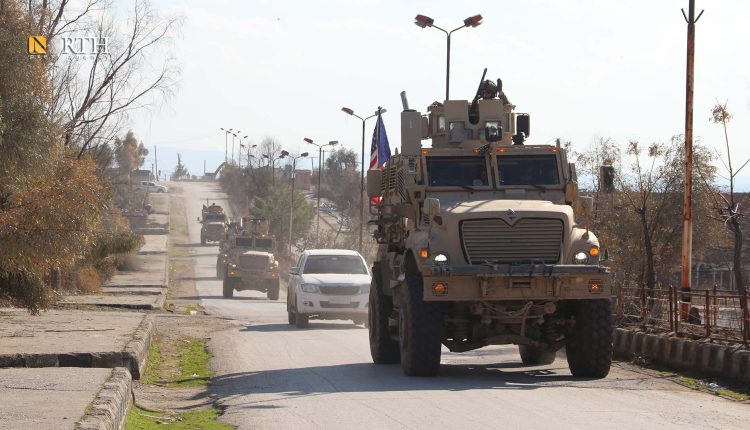
By Abdulsalam Khoja
QAMISHLI, Syria (North Press) – Analysts and observers suggest that recent attacks on U.S. bases in Syria by Iranian-affiliated militias are directly linked to Israeli and American actions against Iran.
On Oct. 1, Iranian-backed Islamic Revolutionary Guard Corps (IRGC) launched an unprecedented missile attack on Israel, firing over 200 ballistic missiles. In response, Iran has vowed to carry out further airstrikes across the Middle East, while both Israel and the United States have pledged retaliation.
The conflict between Israel and Hezbollah, exacerbated by the assassination of Hezbollah’s Secretary-General Hassan Nasrallah, has heightened uncertainty regarding the future of U.S. forces in the region, particularly in Syria.
Since the outbreak of war between Israel and Hamas on Oct. 7, 2023, U.S. military bases in Syria and Iraq have come under frequent attacks by the Iranian-affiliated militias.
A rolling fireball
Approximately 900 U.S. soldiers remain stationed in Syria, working alongside the Syrian Democratic Forces (SDF) in their ongoing fight against the Islamic State (ISIS).
Suhail Talja, a Syrian brigadier general and strategic expert, believes these attacks on U.S. bases are tied to any potential Israeli military action against Iran. He explained to North Press, “If Israel, with U.S. support, strikes Iran, Tehran’s affiliated armed groups will retaliate by targeting U.S. positions east of the Euphrates.”
Talja also warned of a potential hidden role played by Russia, given its presence in Syria and its ties with Iran. He described the current situation as a “rolling fireball,” uncertain of what the coming days might bring.
Limited strategic impact
On Oct. 3, a U.S.-led Global Coalition base in the southern countryside of Hasakah was attacked by groups believed to be affiliated to Iran.
Nawaf Khalil, director of the Kurdish Center for Studies, downplayed the likelihood of the conflict having a significant strategic impact on the U.S. forces in Northeast Syria.
Khalil told North Press that while changes are unfolding across the Middle East, he does not expect any major shifts in the balance of power in these areas, noting, “There will be no dramatic impact on northern and eastern Syria.”
Khalil also highlighted the possibility that the Syrian government, alongside Iran and Russia, might attempt to destabilize the region by “mobilizing Arab tribes in Deir ez-Zor.” However, he expressed confidence in the SDF’s ability to protect its areas of control and noted the recent arrival of advanced U.S. military equipment.
He also warned that ISIS could exploit any chaos that arises in the region.
Regarding Russia’s potential role in calming tensions, Khalil suggested that Moscow could act as a mediator if it secures concessions from Washington on its war in Ukraine. Without such incentives, Russia would likely benefit from any escalation and would not be harmed by attacks on the Global Coalition forces in Northeast Syria.
A strategic turning point
Walid Joly, a researcher at the Qamishli-based Euphrates Center for Studies, pointed out that all major players in the conflict—Israel, the U.S., Iran, and their respective allies—are active in Northeast Syria.
According to Joly, Iran-backed militias are primarily there to challenge the U.S. influence in the region.
He added, “From Iran’s perspective, the Syrian Democratic Forces are not neutral, given the tensions that have flared between the two sides over the past year, particularly after the events of Oct. 7, which saw a clear escalation by Iran against the U.S. positions.”
Joly believes this phase marks a critical transformation in regional and international relations. He warns that navigating this period requires political acumen to avoid significant losses, as the expanding circle of conflict could ignite broader unrest across the region.
